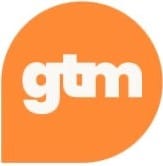Kevin Bailey has deep domain expertise in cybersecurity. He's worked at companies like Symantec, BAE systems, and IDC Research. Throughout all of these roles, he’s specialized in Go-to-Market strategies. He now runs Synergy Six Degrees, which is a consulting firm in Go-to-Market strategy.
The case study he's going to be talking about in this article is called Clearswift, which specializes in data loss storage. He's going to walk us through some of the frameworks that he's seen to be successful, using Clearswift as a model.
Somebody asked me about what a good career for a product marketing person looks like. So to give you an idea of my background, I've previously run a product marketing team in EMEA for Symantec. I then ran global analytics intelligence for Symantec worldwide.
I've been the Research Director for IDC on security software. I pulled together BAE Systems and applied 14 intelligence businesses into three business units. I've repositioned companies, and now I'm starting my own company. So you have an absolute wealth of opportunity.
One thing I always say to marketeers is that you don't just do the coloring in section and the pink fluffy stuff. You do the stuff that says that you were in the field before a salesperson has even woken up in the morning.
You're the pathfinders. You go out there and get black and blue and bruised testing stuff before a salesperson’s even got a chance to sell it. That’s how brands are made.
I have a Master of Science degree in Marketing Strategy, and the reason I did an MSc and not an MA is because I know how to do it, but I want to know why I should be doing it.
That's the thing you should always say to everyone: “why?” And the only way you do that is by being data-driven and factual about it.
How do you combat salespeople when they push you back? You do it through fact, not emotion. They might say, “I don't want to go and sell this because I'm used to selling this way.”
In response, you say, “Well, the company now wants you to sell this product. Open the door, go away, and don't come back until you’ve sold it.”
Many people ask me why I called my company ‘Synergy Six Degrees.’ I don't have an alliance to Kevin Bacon, first of all. I did my MSc degree on social media and business, and I found that I could do six degrees of separation in 3.4.
People talk about social not being the thing that it should be, but it is. It's a powerful way to get your message out and contact people. Get your network really close to you. Use everything that you've got. Do them a favor and they’ll do you two favors back. And that's how you build it.
You'll see through the framework that I’ve built that it's all about doing things together. If you get isolated, then people will think of you as just the coloring in section. If people realize what you put into your job, then they'll realize the amount of time and effort it takes to do what you do as a contributing factor to the whole solution.
So this is my framework and we’ll go through it bit by bit. By the way, I do have a website. You can go on there and download every single bit about what I'm going to talk about, and there are papers about each section.
Go-to-Market isn’t just a marketing exercise. It's everyone's exercise, and you'll see what I mean by this.
When I started my business, I went to see a friend of mine, Keith Robinson, who’s the Chief Strategy Officer at Sage. I asked him, “Who owns Go-to-Market?”
He said, “Product.”
“Why?”
“Well, they set the strategy.”
No they don't. They just build the product. They might know what's needed in it.
Then I asked somebody else, “Who owns Go-to-Market?” Their answer was sales. Now that's routes-to-market, not Go-to-Market, very different terminology. They all own their own pieces but you've got to understand that it all fits together.

The Clearswift Argon product launch
My job at Clearswift as the VP of Go-to-Market was to reposition the company as a data loss prevention provider. They were known as an email and web security company, and they wanted me to reposition them. And you'll see where in the KPIs I had certain things to hit.
If you don't have a purpose, it's not worth it. It should be the way that the customer views you, not the way you think about it. So it's their benefit, not your benefit.
Features should be simple to implement. Why? Because every other DLP product was hard. It should also deliver a unique technology for email security.
It also eliminates the pain of a thing called ‘stop and block.’ If you go to send data out when you shouldn't, the system stops it from going out. Well, that's not good enough. You could redact it, and that's what they had. They could physically take that piece out, put it all back together, and send it out but without the content in there that they shouldn't have sent.
Above is a small number of the KPIs. The project sheet for this was 468 lines. Everybody owned something in there, and everybody knew what was dependent upon them before somebody else could do anything.
I work on a Pareto system where things are either green or red. They're either done or they're not done. 99% says it's not done and 100% goes green. And on the spreadsheet, when you put 100% in, there's a little column or cell next to it that's put a green smiley face up.
It's amazing the number of people that complained first of all. They said, “ I’ve done 80% of it, that's good enough.” But I need 100% for somebody else to pick it up and then go and do their job. When they got 100%, they were the first to come to me saying, “Why didn't you change that to a smiley face?” It’s simple things like that.
So we're going to go through and I'll show you how the framework fits with these. This is B2B. It's a software and hardware environment that it works with.
Driving successful outcomes through Go-to-Market launch KPIs
Ensure an inclusive launch
First of all, Go-to-Market is inclusive, not exclusive. Below are the stakeholders. Everybody here is what I call specialist disciplines. Every one of these was involved in the first meeting and subsequent meetings.
This company had about 150 employees, and the vast majority were based in the UK just outside Reading. I had everyone from these departments at that meeting, even HR and talent were there.
Market relevance established
Who goes to try and get rid of a product If there's no relevance for the product in the market?
At the beginning of last year, I launched a blockchain company. It's still early, but it's relevant. You have to find out where it is. And the way you do that is you pick data flow.
The data comes from internal and external resources. You take your own data first. Believe me, you’ll have a tonne of it, it’s just hidden away from you. Then you go to the likes of analyst companies, research companies, and secondary research, and you build it. Don’t cut back on this part because this underpins everything you do.
The other thing that you want to take in and make sure you've done is the external forces. Emerging tech, what's going on in the market? Are you going to bring something to market that's going to be out of date by the time you’ve produced it? What's happening in the economy?
At Symantec I used to do an economic flow chart that showed what was going on in the US and around the world, and how that then paired down to the local impact. Think about Brexit now. We'll laugh and joke about what's gone on and what hasn't, but it's a massive economic impact on the way people buy and sell at the moment.
With trends, go and look at Gartner’s Magic Quadrant and their hype cycles. Look at the Forrester Wave, and IDC market scopes, they're all out there.
What are influencers saying in the market? Because if you go in and say to somebody, ”I want to do this,” and they tell you we shouldn't be doing it yet because this company says that it's not going to happen, you've got to deal with that.
Benchmarks. There are lots of available just on the net, you can go and get all this in there.
And then governance. When I launched this product, I had to launch a different one in Germany than in the UK because of the different laws that were in before GDPR. Under German law, no individual is allowed to look at another person's data, so you had to make sure it was automated. So things like this play into it, and that scopes how you build the product.
Agreed minimum viable product is functional on launch
For instance, if somebody said, “I'm going to launch Spotify with these features,” and then came back two days before the launch and said, “I said four things. I've only actually given you two.”
You go, “Okay, fine. When are the other two coming?” They're going to come in a month after, which you can deal with.
But then they say, “Actually, I produced five.” But you don't know about the fifth one. You’re not prepared for it in the market. So you need to know what the features and functions in a minimum viable product are so you can plan everything for that.
Your minimum viable product must fit with your company strategy and your purpose. If it goes outside that you can question it and say, “Why are we doing this?”
In the same way with portfolios and product management, you have your salespeople so they know what's going to come down the line and what they're going to be selling. And obviously ourselves as well on marketing, because we've got to know what we're going to promote and campaign about.
Product release dates
People like to be prepared. Tell me when it's going to happen and then I can be prepared for it because I've got a tonne of other things to do. Tell me when the sprint dates are from the product management team so we know how the development of the product is going. They're not hidden, they're things you should understand.
Tell me when you're going to release the product to marketing, not to the market. You get it first before it’s generally available because you have a gap that says, “Between this date and that date, I can get PR to start writing the press releases because I know what I've got and what it's going to do.”
Those dates are in there. That's where these 468 lines come from. There are critical parts that say, “At these points, these things come in.” So everybody's working to it. Plus, if something's delayed, it all shifts down, so you know where it's going to and if you're going to overrun or not.

Product architecture sourced
The reason why this is down as being sourced is this was hardware and software. We had to make sure that the product management team knew the hardware it was going on was procured through the operations team and the finance team.
What's the point of building software if it's got nothing to go on? It's just like running around in the ether. Software’s no good without something to sit on, and we needed to make sure it was in there. It’s a small but critical part.
Who are we getting it from? Is it the right spec? Is it in place? You don't want somebody to say, “Right, the product’s ready, but I forgot to buy the thing it's going in.” All of these need to be put in place.
Validation of vertical and segment markets
Look at the people that are involved. HR’s involved, but why? Because if you're going to target a certain market, have you got the people in those countries to go and target? Do you need to recruit them? Have you got the right skill levels that need to be in there?
This is what you can say to people as value add. “To sell this, I need this type of skill. I need to change the sales skills.” So we need to make sure that they're involved.
The adoption curve framework
I built something called the adoption curve framework. The line that says ‘categories’ is actually Gartner's hype cycle.
You look at each of these areas, you look at countries at the bottom, and you look at each stage. You could launch a product and find you've missed the market. You could launch a product and find that actually your features are really good and everyone’s been waiting for them. This is the reality of it, and this is the one I built for this project.
You can have up to seven different horizontal axes on this. Below are the early country adopters for technology. It’s amazing. The United Kingdom is second, even though it's one of the biggest saturated markets for tech. Iceland, Japan, and the United States are before us.
Somebody at Symantec said to me, “I want to launch a mobile app and we're going to go and launch it in the UK.” I asked them why and they said, “Because it's a high-tech country that’s very well saturated.” Great, but we have fixed-line systems here. Why are they not launching it in Africa, or in the Middle East where they have no fixed line? It's all mobile, so they'll get a better adoption. They didn't think about that.
People think cyclic in nature. “We’ve done it this way, so let's always do it,” rather than this thing called secular. If you think about secular, you've got an opportunity to grab a market before anybody else does. And if you don't grab it, it'll go.
But this looks at vertical markets and which vertical industries are techies, visionaries, pragmatics, and conservatives. And this isn’t just vertical industries, it's about regulation that comes in as well.
On the functional side, you as product marketeers and the product management team should be able to build that. If you don't, you're not doing your job. That's what people expect from you. What are the feature functions?
Then you look at users, early adopters, early mass, and then sales. What’s their sales cycle? So you find out where you are in all of this. Find a line and come in.
There's also an orange line going through the framework called Maloney's law. People inside the company hate seeing the same posters for longer than six months. They say, “Why hasn’t marketing changed them?” And the reason is Maloney's law says until you get 16% market share, don’t, because the world hasn't known about you yet.
In the UK alone, there are 5.8 million organizations that are less than 50 million euros in business size. If you think about it, 99% of the business here in Europe is made up of that particular size of organization. The other less than 1% are the big enterprises.
The enterprises make up 63% of the revenue, but the five or six million in the UK make up the smaller amount. So you've got to start looking at those and target correctly in what you do.
Target outcomes and modeling
Once you've got all your data together, you start modeling it to see what's going on. Proving hypotheses. A bit like artificial intelligence or machine learning, it's just a hypothesis. “I think by doing this, I'm going to get this.”
There are lots of models that you can do, and what you're doing is trying to align it to the business you've got at the moment. Unless it's a whole new business unit, it's got to fit into what you have today.
For revenue opportunities, If you're doing subscription revenue over perpetual license revenue, it’s got to fit into that as well. So start playing about with these. Somebody will say that total market opportunity is 5 billion. Please don’t get a thing called analysis paralysis and start saying, “Is it 5.1 or 5.2 billion?” It's a big number.
What you do is work it down to your target geos and say, “That's what our market is, and if we penetrate this amount, this is how much it's worth to us.” That's what salespeople want to know, “What's my opportunity?”
Sales assets and promotions
Once you've started modeling everything you have there you can start building out sales assets and promotions. You know where you're going to target, you can implement it based on what you've got today, start putting it up on the system, and start the training in place as well. Everybody knows what you're working to, the timescales for the release to market.
Pricing and commercial framework established
For the last five or six jobs, I’ve owned pricing as well with the finance team, the sales team, and operations. Subscription, tier pricing, volume pricing, bring your own licenses, all of those things go into this.
You're looking at, “What's my cost of goods? What's my profit? What's my margin? Where can I discount? How can I build channel revenue into that if I'm going to use two-tier or three-tier channel?” They'll want to know that.
This is where you can literally boost it by saying, “I understand a lot of this,” and put it into place.
External coverage
You've got to start testing the market, i.e. going in and talking to your subject matter experts and the analysts out there because you want to get covered.
One of my KPIs for this product was that I needed to get the company in the Gartner Magic Quadrant for data loss prevention. So I brought in an analyst relations person, and she worked with all of the Gartner, IDC, and Forrester people that I needed to be in front of and prove the value of the product to them.
Market awareness established
You're starting to get the coverage out there, and that includes all of the things around PR as well. You want to increase your noise; your share of voice is going out in the market. With your PR company, either do it yourself or get an external agency on a retainer and start boosting it out there. That's their value to you.
You want to know where you sit with the competition. You want to start putting the frighteners under them. They'll start looking over their shoulder and wondering where you are, and you're building this together.
Don't forget that this is portfolio marketing. Press and analysts will not talk to salespeople or marketing people, they talk to product strategy people. That's why you've got to have these guys literally linked in with you.
For the blockchain company I launched last year, I got onto Gartner's Cool Vendor award, one of only three in the world. Why? Because I had the Head of Strategy literally attached at the hip to me, doing every call and convincing them that was there.
Support triage
You've got your market awareness established which is good. Then you've also got to make sure you've got support and triage. You own this as well, so you've got to make sure they've got the content, assets, and all of the support capabilities. If you're using channel, you've got to have dual branded activity going on.
Now, all of this can come under you, but something really key is that you don't have to do it, you just need to make sure it's been done because that sits on your project list. So all of this needs to be in place to allow you to accelerate that.
Post-launch review
In the middle of the framework below where it says align, implement, and review, you're continually doing this. If you do anything through the Chartered Institute of Marketing, it's about closed-loop systems. Know when you're going wrong, rectify it, and start again. When you're getting even better than you thought you would, accelerate it. Those are the sorts of things you can put in place.
You will screw up, I can tell you this now. It's reality. If you don't fail, you've not done it properly, because you should be pushing the envelope each time. Plenty of times I’ve fallen over myself, asked people to do things they shouldn't have, and I learned from it. But they will trust you.
If you have all of these groups working with you, number one, there are no surprises. They know what's coming and they know where they're responsible. Salespeople know what the product is they’re selling, and product management knows what they should be building, not what they think they want to build. Product engineering like building funky stuff. And you say, “That's great, but there's no market for it.”
Even the HR team, which people say is just for talent and PDPs. It's not. They're a key part of it, and they understand when everything's been put together.
The results of the Argon launch
Below are the results that we produced for Argon. That's the product that's out there and is part of the dashboard system. It worked with all the other main competitors. They didn't like that. You’ll also see the sales cycle that it worked through, and we built this both with direct teams and channel teams.
We also had one of our partners, Matt Helling, who's Head of Security Practice at Softcat in one of our press releases.
There were product data sheets, videos, and I got in the Magic Quadrant. As far as I was concerned, I won. But the thing is, we did it as a team. And if anybody’s aiming to get in the Magic Quadrant, there's no such thing as a bad place in it. Pull up the flags, go out for a drink, and tell everybody you’re on it, it's great.





